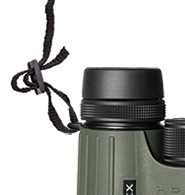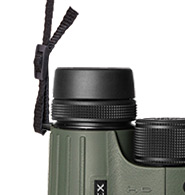General


I found an optic on Amazon for a really great price, is there any issue with purchasing it from them?
Amazon is NOT an authorized dealer of ours. We will still honour the warranty on items purchased from them, but we are unable to offer assistance involving issues with the transaction between yourself and the seller, including incorrect products, failure to deliver, and payment or refund issues. Also keep in mind that you are not supporting your local dealers or Vortex Canada when you purchase from an unauthorized dealer.
Where are your products made?
Our products are manufactured in one of several different places, including: China, Philippines, Japan, Myanmar, and the USA. If you wish to know where a specific product is made please contact our Service Department to ask!
Warranty


Do I need a receipt for warranty? Or do I need to register my item with you?
No, and no! We don’t need a receipt, and there is no registration necessary. If your item ever needs warranty service, just follow the directions for our VIP Warranty to send it in for service.
Are accessories covered under warranty as well?
Most accessories are technically not covered under the warranty, but contact our Service Department and if we have something available to help you out than we always will. We like you to be able to use and protect your optics properly! Availability and cost of these items will depend on what the item is and whether it is from a current or discontinued model.
I need to send my item in for warranty service – who pays for shipping?
We ask the customer to pay to ship the item needing service to us, then we will cover the cost to ship the item back to you once it has been repaired.
What is the turnaround time for sending an optic in for warranty service?
Our turnaround times vary, but we do our best to return your items quickly! If you have a specific date for a trip or competition please let us know, and we will do everything we can to ensure you have your gear back in full working order by then.
I’m filling out the Product Repair Form to send my item in for warranty service, but I can’t find the serial number on my item, where is it?
Not all items have a serial number! On most items the serial number will be on the bottom. If you can’t find it just leave that line blank and we’ll fill it in if applicable once we receive your item.
Riflescopes


My scope doesn’t come with a sun shade, but there are threads inside the objective end of the scope – Do you have a sun shade that will thread onto my scope?
No, we do not make sunshades for any scope that doesn’t come with one in the box. The threads inside the objective end of your scope are for baffling – this deflects the movement of light coming into the scope and helps to prevent glare. We can give you a recommendation for an after market sunshade however, just Contact Us for that info!
Which Vortex scopes have glass etched reticles, and which have wire reticles?
All of the Razor, PST, and any of the illuminated V-Brite Crossfire riflescopes have etched glass reticles. All other scopes have wire reticles.
What is parallax and how do I use it?
Parallax is essentially an optical illusion regarding how the reticle appears to move in relation to the target as your eyes move in relation to the scope. When parallax is set correctly the reticle should appear to be still over the view through your scope. On many scopes you can set the parallax depending on the distance to your target – typically the yardage goes from about 25 yds to “infinity”, which means anything above 500 yds. This is adjusted by either a side parallax knob, opposite the windage knob, or a ring that rotates around the objective end of the scope, known as an adjustable objective (AO). To adjust your scope just turn the knob/AO to the approximate distance to your target, and move your head around a bit while looking through the scope - you will likely have to make slight adjustments until you can move your head around and not have the reticle moving more or less than the view through your scope. There are also many scopes that are known as “parallax-free” which you cannot adjust for parallax. These are usually set to 100 yds, and can therefore usually be used successfully at distances of 100 yds or less. Rimfire scopes are usually set to 50 yds.
What is the difference between MOA and MRAD?
MOA (Minutes of Angle) and MRAD (Milliradians) are angular units of measure, much like inches and centimeters are linear units of measure. MOA is most commonly associated with ‘inches at 100 yards’, the angle created by 1 MOA roughly equates to 1 inch on a target at 100 yards. Units of MRAD are given in .1 increments.
What is the difference between First Focal Plane (FFP) and Second Focal Plane (SFP) reticles?
The FFP reticle will grow and shrink in size as the magnification is changed. This means that all of the reticle subtensions will be accurate on any magnification. A SFP reticle will stay the same size as magnification is changed. This means that the subtensions will only be accurate on a single magnification. For most of our scopes this is on highest magnification or 18x – see the reticle manual for your scope to confirm yours!
I have a scope with a Second Focal Place reticle – At what magnifications are the subtensions going to be true?
On any scope that is 6-24 x 50 the reticle subtensions will be accurate on 18x magnification. On the Viper 6.5-20 x 50 with Mil-Dot reticle the subtensions will be accurate on 14x magnification. On every other scope that is SFP the reticle subtensions will be accurate on the highest magnification (eg. A 2.5-10 x 44 scope will be accurate at 10x, a 4-16 x 50 will be accurate at 16x)
What are the proper torque settings for mounting my riflescope?
For the rings to scope tube use torque settings of 15-18 in/lbs (do not use thread locker!). For base to receiver use torque settings of 25-35 in/lbs.
I cannot use my back up sights at the same time as when my scope is on my rifle. Does Vortex make a mount that can fix this?
You are better off sticking with one primary sighting device. Pick one and learn how to use it well. If you wish to use back up iron sights in case there is an issue with your scope, we recommend zeroing the iron sights then removing them and just keeping them at hand in case you feel you need them. Vortex does not make a mount that can allow you to use iron sights while you have a riflescope on your gun without having to look through both iron sight and riflescope at the same time.
How do I properly focus my riflescope?
Adjust the reticle focus.
Note: If the scope is a fixed power unit, skip steps "A" and "B".
- Turn the magnification ring to the highest power.
- If your scope has a side focus parallax adjustment or adjustable objective feature adjust it to ‘Infinity’. Note: Side focus parallax adjustment knobs may or may not have distances marked.
- Turn the ocular bell/eyepiece all the way in.
- Aim the scope at a blank white wall or up at the sky with no cloud coverage.
- Look at something nearby, then look at the reticle through the scope. If the reticle is out-of-focus, turn it slightly to begin focusing the reticle but look away from the scope. Make sure to look away from the reticle after a few seconds to ensure your eye doesn’t naturally try to bring the reticle into focus. You want to look through the scope and see a sharply focused reticle immediately with your eye relaxed.
- Once this adjustment is complete, it won’t be necessary to re-focus every time you use the riflescope. However, as eyesight may change over time, we recommend re-checking this adjustment periodically
- Only complete this step if your riflescope has a side focus parallax adjustment or adjustable objective (AO) feature. These riflescopes feature a separate focus which should be used to fine-tune the image focus. When the image is sharply focused, parallax error will also be eliminated.
- Be sure the reticle is correctly focused.
- Turn the side focus knob or AO until the target image is as sharp as possible. The yardage numbers referenced should somewhat match the actual yardage to the target, but keep in mind these are not exact and are more of a guideline than a concrete reference point.
- Check for parallax error by moving your head back and forth while looking through the scope. The focus is correct if there is no apparent shift of the reticle on the target. If you notice any shift, adjust the focus knob slightly until all shift is eliminated.
Warning: Looking directly at the sun through a riflescope, or any optical instrument can cause severe and permanent damage to your eyesight.
Over-tightened rings can restrict movement of the parallax cell and cause the parallax knob to turn hard or not even change the focus of the image at all. We recommend 15-18 inch pounds on most ring sets, but please feel free to call and ask if you have questions about your specific rings.
Why are my riflescope’s turrets ‘backwards’?
Check to ensure you are thinking in terms of moving the bullet’s point of impact rather than your actual point of aim when you dial your turrets. For example, when you are shooting low and dial your elevation turret ‘up’, your reticle should actually physically move downward, but it does this so that you need to point the barrel ‘up’ in order to get back on target again. When you move your barrel up, it brings your point of impact up and on target where you want to hit. This can be confusing when initially bore sighting the riflescope as this is the only time where you want to think about actually moving the reticle, but once you start shooting and thinking of moving the bullet holes down range rather than moving the reticle, it will be much easier.
Red Dots


What torque specs should I use for mounting my red dot?
For red dot to mount use torque settings of 15 in/lbs (withouth thread locker). For mount to receiver use torque settings of 20 in/lbs.
Binoculars


How do I attach a neck strap to my binoculars?
| Step 1
Thread the end of the strap from the bottom, then up through the strap attachment loop. |
Step 2
Hold the buckle and thread the end of the strap inside the buckle. |
Step 3
Adjust the overall length and pull the strap webbing tight so it is secure within the buckle. |
 |
 |
 |
Note: Threading a metal ring directly onto the binocular’s strap attachment with rings, clips or other aftermarket equipment will result in broken strap attachments. Instead, use nylon zip ties around the strap attachment and attach metal rings to the nylon zip ties.
What do the numbers mean? (i.e. "10x50")
The first number in the pairing, “10”, is the binocular’s magnification. In this case, 10x binoculars will magnify your image 10 times. The second number, “50”, is the objective lens diameter in millimeters. (The objective lenses are the lenses at the end of the binocular, farthest from your eye when looking through the optic). Therefore, 10x50 binoculars have a 50mm objective lens diameter. When all else is similar, a wider objective lens will take in more light, making the image brighter.
What is the best magnification for binoculars?
It depends on the application and bigger numbers aren’t always better. For hunters in thick timber where deer or other quarry can rarely be seen more than 200 yards away, the wider field of view, brighter image and reduced shakiness from hand holding of an 8x42 would be ideal. For hunters in vast open landscapes who need to pick apart the side of a large mountain or landscape far away may opt for a larger binocular like a 12x50 or even an 18x56, knowing they’ll be using it on a tripod for stability for long periods of time. Generally speaking, 10x42’s are a good middle ground all around, but all situations may vary. For more personalized help, feel free to Contact Us and we’d be more than happy to get you into the perfect magnification and size binocular.
How do I set the diopter?
The diopter is a ring usually located directly underneath the right-side eyecup. Where the center focus wheel adjusts the focus of each barrel in tandem, the diopter individually focuses only the right side to account for people with different prescriptions. To set your diopter, start with your right eye closed, looking through only the left barrel of your binocular. Using the center focus wheel, adjust the focus until the image through the left side with your left eye is perfectly clear. Once the left side has been made clear using the center focus wheel, close your left eye and open your right eye. Now, use the right-side diopter underneath the eyecup to adjust the focus for your right eye individually (if necessary). Once the right side has been made perfectly clear to your right eye, you can open both eyes and use the center focus wheel from then on. Now, both eyes should focus together, even if they are different prescriptions.
What binocular is best for someone with a narrow IPD (interpupillary distance)?
Porro prism binoculars, such as our Raptor binoculars, are a great fit for people with a narrow IPD as they fit a wide range of face sizes. You’ll know when you see a porro prism binocular because it will appear to have a “bend” in the two individual tubes, as opposed to a common roof prism binocular which has two individual tubes that appear to be totally straight from eyepiece to objective end.
Rangefinders


How do I get out of LOS mode?
- Press the measure button once to bring up the crosshairs.
- Press and hold the menu button for 5 seconds.
- Press the measure button once, this will switch the rangefinder to HCD mode.
- Press and hold the menu button for 3 seconds to exit the menu.
How do I get out of HCD mode?
- Press the measure button once to bring up the crosshairs.
- Press and hold the menu button for 5 seconds.
- Press the measure button once, this will switch the rangefinder to LOS mode.
- Press and hold the menu button for 3 seconds to exit the menu.
When do I want LOS mode and when do I want HCD mode?
LOS stands for Line of Sight – This will give you the exact distance of the target with no compensation for angle. Generally, this will be used when calculating how much you need to hold for wind on a long-range shot.
HCD – Horizontal Component Distance – This is an angle compensating mode, that will account for the angle from you, to the target. Anytime you are shooting, uphill or downhill, the projectile will drop less as it is not accounting for gravity in a straight down fashion. This means your bullet or arrow will drop less if you are shooting uphill or downhill. HCD mode will give you the yardage you need to account for while adjusting for the drop of the projectile.
When do I want LOS mode and when do I want HCD mode?
This is the tube that the LCD display is in.
How do I change from yards to meters, or vice versa?
- Press the measure button once to bring up the crosshairs.
- Press and hold the menu button for 5 seconds.
- Press the menu button once, then press the measure button to toggle back and forth between yards (Y) and meters (M).
- Press and hold the menu button for 3 seconds to exit the menu.
Monoculars


What do the numbers mean? (i.e. "10x36")
The first number in the pairing, “10”, is the monocular’s magnification. In this case, 10x monoculars will magnify your image 10 times. The second number, “36”, is the objective lens diameter in millimeters. (the lens farthest from your eye when looking through the optic). Therefore, 10x36 binoculars have a 36mm objective lens diameter. When all else is similar, a wider objective lens will take in more light, making the image brighter.
